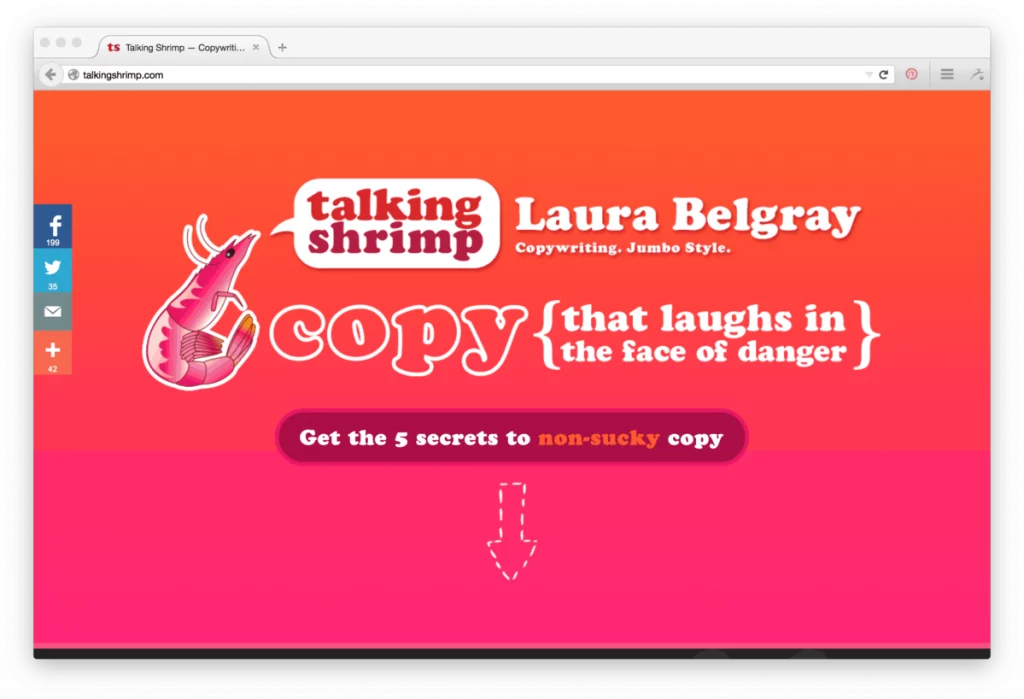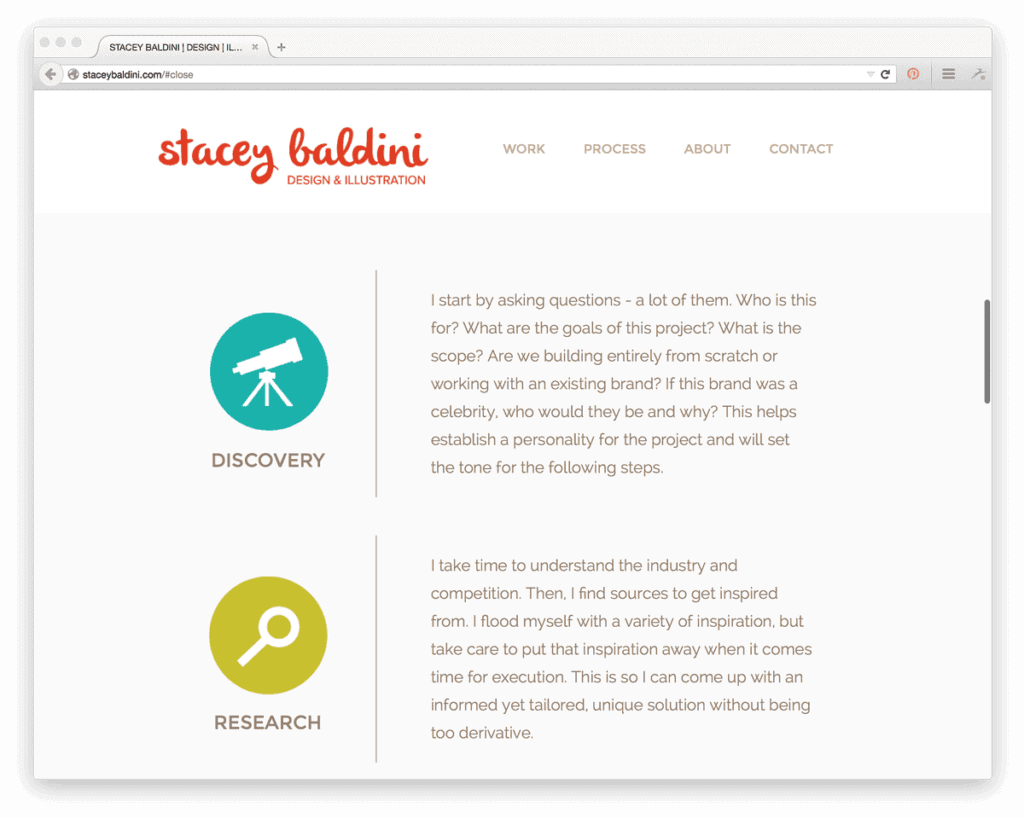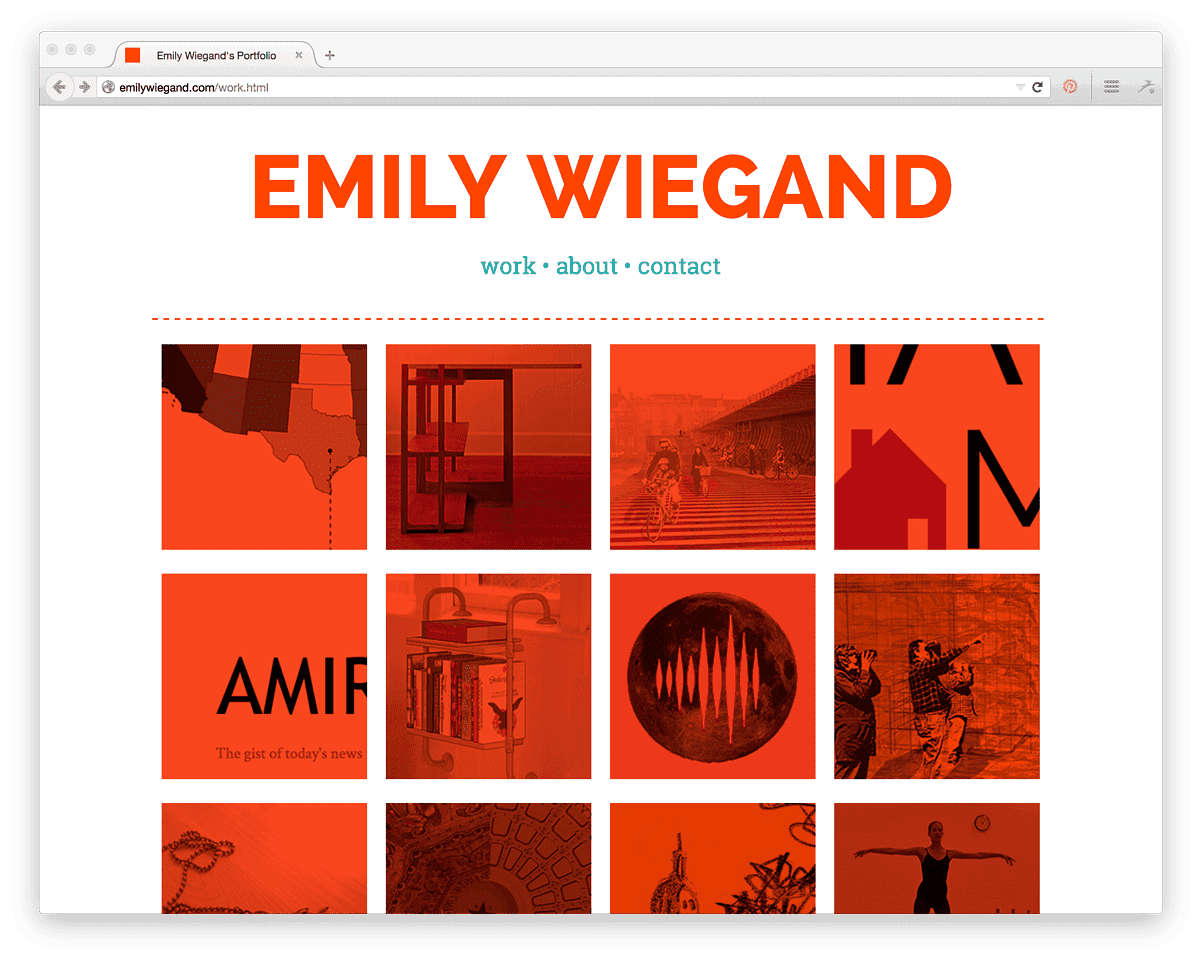Have you ever looked through the portfolio of one of your idols and experienced a combination of awe… and imposter syndrome?
If you’re freelancing, looking to start a job in tech, or just trying to build up your expertise in an industry, putting a great portfolio on the Internet is key. Word of mouth is a great tool for getting your name out there, but building a freelance portfolio website will make you stand out in a potential client or employer’s mind.
But if you’re new to your field and it feels like it will take years to build up a collection of work you’re proud of, then one of those beautiful portfolios might seem way out of reach.
So what can you do if you’re caught in a catch-22 where you can’t get more clients without a portfolio to share, and you can’t stock your portfolio without more clients??
Well, you can take a deep breath for starters. Even if you only have a few projects under your belt, YOU can create one of those envy-inducing, client-bating portfolios.
Here are a few strategies for building a freelance portfolio you’re proud to show off:
1. Create your own freelance portfolio
Whether you’re a web designer, developer, graphic designer, illustrator, or content marketer, creating your own portfolio is a great move.
If you’re a web designer or developer, code up your site from scratch! If you’re an illustrator, draw fancy icons for your site. Or if you’re a graphic designer, brand your website in your signature style. If you’re a content marketer, write killer copy for your portfolio. You get the idea.
When you create your own portfolio, you get the opportunity to demonstrate to potential clients and employers what kind of work you can do, and your portfolio itself is a project you can use to showcase your skills. So meta!


On Talking Shrimp, copywriter Laura Belgray demonstrates her snarky, straight-to-the-point copy in her own quirky way.


Rashida Balogun, who specializes in branding and web design for the beauty industry, demonstrates her skills on the site, I Heart Fame, that she branded and built from scratch.
2. Include the most important elements
A portfolio isn’t just a collection of all your past projects. In fact, a portfolio like that might look impressive to someone in your industry, but if you’re trying to get hired by a client or hiring manager who is less familiar with the details of your field, then you need to make sure your portfolio can bridge that gap. Add explanations to your portfolio to preempt questions that someone hiring you might have, such as your pricing, working style, or niche expertise.
In order of importance, the function of your portfolio is:
- To show what you can do to make the client’s/employer’s life easier.
Instead of saying what you do, say what you can do for them. So if you’re a content marketer, rather than saying that you write epic sales copy, say that you can triple their email open rates and double their conversions, for example.
- To give them an easy way to contact you.
Make it simple for visitors to get in touch with you as soon as they know they’re interested in your services!
- To explain the details of the work you can provide.
Spell out the exact type of work you like to do, what kind of clients or companies you’d like to work for. For example, if you’re a web designer who wants to build personal websites for artists, say so!
- To tell them who you are and what you will be like to work with.
Take the time to explain the process you went through to complete past projects in your portfolio, and describe your work style.


Web designer Stacey Baldini makes space on her portfolio to describe her process, so clients know exactly what it will be like to work on a project with her.
3. Tell, don’t show.
What?! I thought it was show, don’t tell. Well, portfolios are all about providing examples of your work. But if you just screenshot a project and include a link, you’re missing out on a huge opportunity. Take the time to explain the work you did on a project, as well as any special circumstances or problems you worked through. That will give potential employers or clients a better idea of your work style and thought process, so they can imagine how they might also work with you.
And if you’re worried you don’t have enough projects in your portfolio, taking some space to explain each project is a great way to flesh it out.




Web designer, trained architect, and artist Emily Wiegand takes the time to explain her featured projects.
4. Focus on what work you want/like to do. And who you want to work with.
If your portfolio is a little sparse, take some space to explain the kind of work you’re passionate about. This is the place to call out specific types of companies or clients you’d love to work with (and why), and to explain your goals.
Even if none of your projects demonstrate those skills yet, showing that you have ambition and potential can go a long way.


When user experience designer Ximena Vangoechea stocked her portfolio with projects she’d love to make happen, like a Quibb app redesign and a weather alarm clock app design for iPhone, it landed her a job. Her portfolio shows companies and clients the kind of work she can (and wants to do) for them.
5. Add “practice” projects
A portfolio doesn’t have to include only paid work, and it doesn’t even need to be limited to work you did with clients. If you worked on projects in school or in a training course, include them! And don’t be afraid to include tiny projects you work on in your own time.


Jen Best’s portfolio includes mini projects and exercises from her Skillcrush Web Developer Blueprint.
6. Talk about your education
Showcasing your education is a great way to fill in any gaps in your portfolio, especially if you just learned new skills. Say you went to school for art and sold paintings on your Etsy shop.
Now, you’ve just learned how to build websites from scratch (maybe through an online course at Skillcrush), and you’re looking to start a new career. This is a great place to showcase the training you’ve done to acquire your new skills. It will give visitors more confidence in your abilities while you work on adding more projects.
7. Include press, mentions, and testimonials
The first time I Googled myself as a grown adult, I was amazed! I thought there was NO press out there about me, but I realized that my name pulled up several pages of hits.
Whether you were featured in your hometown newspaper or a web designer you admire Tweeted about your work, include it in your portfolio! Even if it doesn’t relate EXACTLY to the type of work you’re doing, testimonials are social proof that you are who you say you are.
And don’t shy away from asking for testimonials either! Ask former clients, employers, and even teachers to send you a testimonial.
Pro tip: make it easy on them and send them a testimonial draft and ask them to approve it!


8. Create a free resource
It can feel strange to give your work away, especially when you’re working like mad to earn a dime! But giving away a tiny sample of what you do is a great way to get clients and employers interested. So if you’re an illustrator, give away a hand-drawn icon pack. If you’re a web developer, give away your top tips for building a great small business website.
Giving away some of your work shows goodwill, proves that you’re willing to put in hours to create something awesome, gives visitors a taste of your signature style, and most importantly, builds up your reputation as an expert.
And remember, the best way to create an awesome, impressive portfolio that will land you a job is to get in-demand skills. If your portfolio looks a little lean, level-up your skillset in a Skillcrush Career Blueprint, where you can learn everything you need to know to get hired as a web designer or developer in just 3 months.
Randle Browning is the Director of Content at Skillcrush, an interactive online community that makes learning life- and career-changing digital skills approachable and fun.
When Randle’s not dreaming up new content marketing strategies at her remote job, she’s reading a good book or putting vegan food on Instagram.



